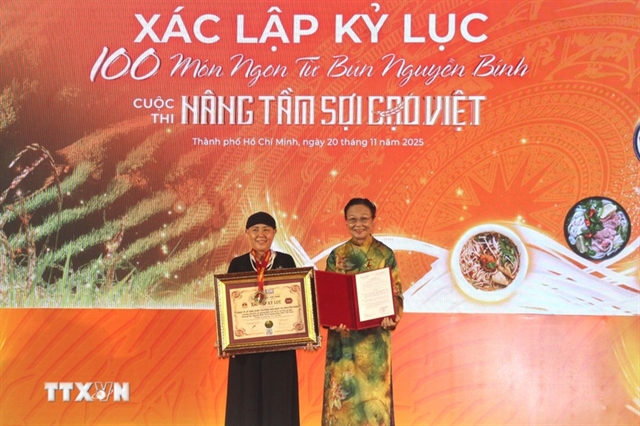 Life & Style
Life & Style

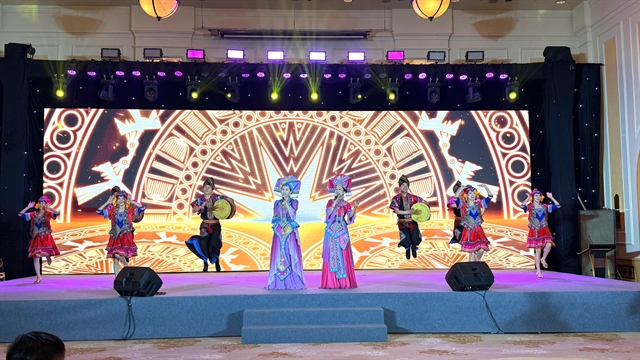
|
| Artists perform Chinese music and dance during the Tea Harmonises the World 2025 event on May 21 in Hà Nội. VNS Photo Ngọc Bích |
HÀ NỘI — Known as home to the world largest jasmine cultivation, farmers of Chinese Guangxi Province's Hengzhou City are proud of their high-quality tea and the fragrant jasmine flowers used in the process.
The Chinese tea culture is an important part of the long and rich cultural heritage of Chinese civilisation. It is not simply a drinking habit, but reflects the Chinese people's philosophy of life, aesthetics, rituals and social values.
They brought their famous products to Hà Nội for a cultural and tourism event entitled Tea Harmonises the World 2025 and A Red Journey Following Footsteps of President Hồ Chí Minh in Guangxi on Wednesday.
The event was also a way of celebrating the 75th anniversary of the establishment of diplomatic relations between Việt Nam and China, along with strengthening the comprehensive strategic cooperative partnership of the two countries.
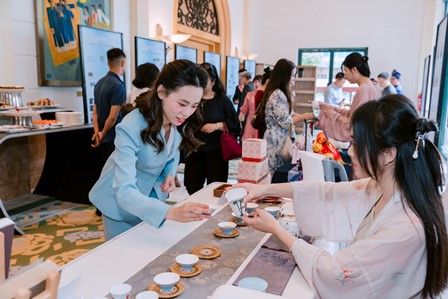
|
| A visitor asks for a cup of Guangxi jasmine tea at the event, |
"Guangxi tea is an important part of Chinese tea culture. The traditional art of tea making of China and related customs was recognised UNESCO's Intangible Cultural Heritage of Humanity in 2022," said Lin Lin, deputy director of the Department of Culture and Tourism of Guangxi Zhuang Autonomous Region.
"Guangxi jasmine tea is also famous all over the world. Hengzhou City accounts for 80 per cent of China's jasmine and jasmine tea production and 60 per cent of the world's production and is honoured as the World Jasmine and Jasmine Tea Production Centre.
"Vietnamese green tea and lotus tea are also very famous, especially lotus tea, with its characteristic floral aroma, attracting many tea lovers.
"(Today) the aroma of tea spreads widely, connecting and strengthening the friendship between Việt Nam and China," she said.
Taking part in the event, Chinese ambassador to Việt Nam He Wei said tea culture in the Chinese culture played an important role in people's life. Like Việt Nam, it was not only something to drink, but a key part of honouring a visitor and an important piece of etiquette.
Tea culture also expressed the harmonious relationship between humans and nature and the way China has harmonised with the world.
Ambassador He emphasised that tea would help bridge friendly relations between Việt Nam and China and hoped that the event would cement and strengthen their positive relationship.
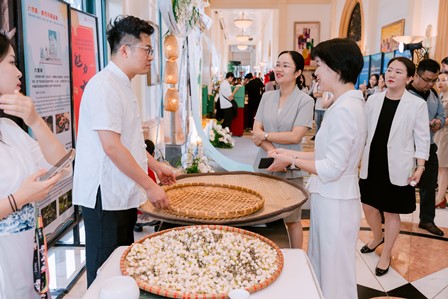
|
| An artisan introduces how the Guangxi people make jasmine tea to visitors. |
"Tea is a common symbol of civilisation and also a 'green' ambassador" in the friendly exchange between our countries, as we share tea culture and a tea drinking habit," said Nguyễn Hoàng Anh, deputy head of the Central Committee for Policy and Strategy.
"We are here today to enjoy tea and make friends though tea. It is the way to prove how tea harmonises the world, respecting like-minded friends and harmony between people and nature."
In the second part of the event, organisers introduced Guangxi as a tourist destination.
"Guangxi is one of the starting ports of the ancient maritime silk road, with magnificent karst landscapes. World-famous scenic spots such as Guilin, the mysterious ancient world cultural heritage of Huashan Rock Painting, and the land of longevity Bama, attracting many tourists from all over the world," said Lin.
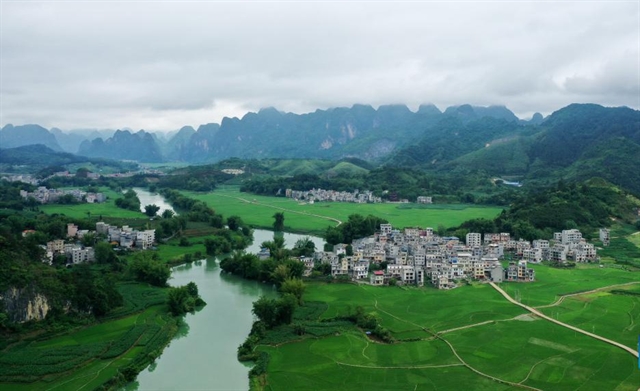
|
| Aerial photo shows rural scenery of Bama longevity village in Guangxi Zhuang Autonomous Region. XINHUA/VNA Photo |
She said the province was naturally stunning, with karst topography and a colourful multi-ethnic identity. It preserved historical memories of the Vietnamese leader Hồ Chí Minh who spent 12 years in China before leading the revolutionary movement in Việt Nam.
Việt Nam meanwhile had rich cultural and tourism resources, from ancient historical relics to unique natural landscapes, plus a rich and diverse cultural art scene, giving visitors unique and unforgettable travel experiences.
Việt Nam is Guangxi's second largest foreign tourist market.
Lin suggested cultural and tourism agencies of both sides cooperate closely and actively to promote mutual preferential policies and introduce each other's tourism products, in order to create beneficial conditions for two-way tourism.
"We have exploited the relics and memorial works of President Hồ Chí Minh in Guangxi. We sincerely invite Vietnamese tourists to come and explore the majestic scenery, our unique customs and cuisine and start the cross-border red tourism journey." VNS




